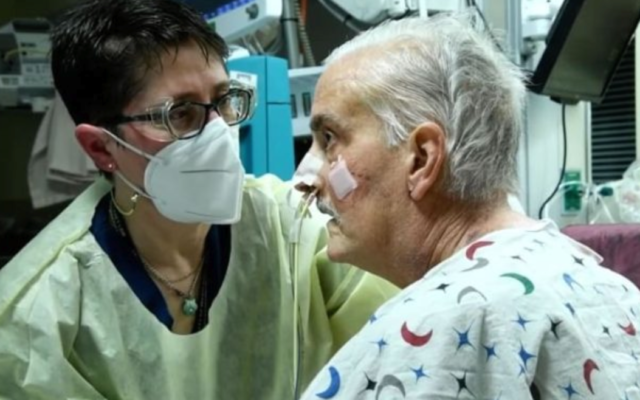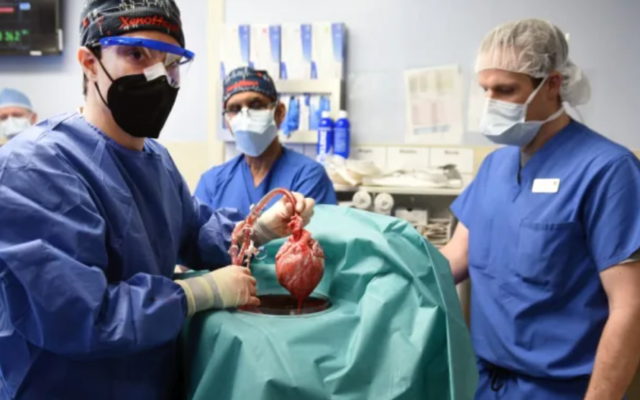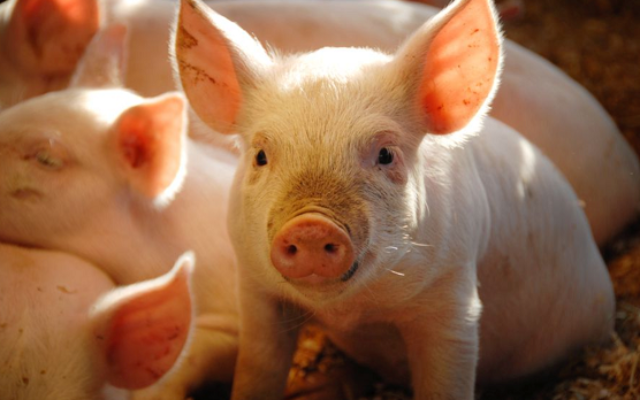Pig Parts Making Human Transplants Routine
Earlier this year, a 57-year-old patient in Maryland became the first human to successfully undergo the transplant of a genetically modified pig’s heart.
Earlier this year, a 57-year-old patient in Maryland became the first human to successfully undergo the transplant of a genetically modified pig’s heart. The patient survived for two months but ultimately died of heart failure. There was some evidence that, while the procedure was considered successful, the organ may have been contaminated with a pig virus, which could have led to the patient’s early death.
Otherwise, according to research that was presented online earlier this month at the American Heart Association’s Scientific Sessions there was considerable evidence that the transplanted animal heart beat more like a human heart than doctors had expected. In fact, according to the electrical signals that were recorded of the new heart, it more closely resembled a human heart and, in some measurements, outperformed it.
One of the study’s researchers, Timm Michael Dickfeld, an electrophysiologist at the the University of Maryland School of medicine, said the easy adaptation of the animal heart to its new human environment was a surprise.
“It’s truly a novel finding,” Dickfeld said, “that electrocardiogram (EKG) measurements recording the heart’s electrical signal were so different from a typical pig heart’s reading.”

In other encouraging developments, in June and early July, a surgical team at New York University School of Medicine successfully transplanted a pair of pig’s hearts that had been genetically modified to make them more compatible with the human chest cavity. They replaced the heart of two patients declared brain dead but who were being kept alive using ventilators. The organs were monitored for three days, worked well and weren’t rejected by the patients.
“It was one of the most incredible things to see a pig heart pounding away and beating inside of the chest of a human being,” NYU transplant surgeon Robert Montgomery told reporters.
The procedures, using the healthy living organs from pigs to replace the diseased organs in human, is called by scientists, xenotransplantation. It was encouraging news for an estimated 100,000 people waiting for a surgical transplant. Last year a record number of human organ transplants were performed.
However, every day 17 people die waiting for new organs because they are in short supply. Of the more than 41,000 transplant procedures only about 3,500 were done of the heart, according to Alex Reyentovick, a cardiologist at New York University. He pointed out that they have a tremendous deficiency in organs, and many people die waiting for a heart,
“Xenotransplantation really has the capability of addressing some of those supply limitations,” Reyentovick said, “and saving innumerable lives.”
While Jewish law forbids the consumption of meat and other products derived from pigs, the animal has proven to be an important source of organs for transplantation. Pigs are easy to breed, and they resemble in many aspects, the anatomy and physiology of human beings.
While Jewish law forbids the consumption of meat and other products derived from pigs, the animal has proven to be an important source of organs for transplantation. Pigs are easy to breed, and they resemble in many aspects, the anatomy and physiology of human beings.
They can be raised in large number in conditions which are free of germs and viruses and can be genetically modified to minimize their rejection by the human body. In the case of the patient who survived for two months with a new pig’s heart the organ had been genetically changed to remove a specific sugar from its cells which was thought to have complicated previous experiments.
According to instructions in the Book of Leviticus, pigs are not considered kosher because the animals have hooves which are not split and does not chew its cud, like cows. The holy commandment in chapter 11, verses 7 and 8 prohibits the eating of pork and even touching the carcass of the animal.
A 1962 Israeli law generally does not allow pigs to be grown in Israel, although in certain areas of the country with numerous Christians, pigs are allowed to be raised. Pork products also are sold in many Israeli markets.

Yet, while eating pork is not allowed, there is no prohibition in Judaism against the use of pigs to save lives. Heart valves from pigs are regularly used to replace defective human ones, insulin for the treatment of diabetes can be derived from pigs and pigskin has been transplanted to treat severe burns.
Yet in Judaism, as well as Islam, pigs are disdained and in our industrial farm’s pigs are bred in conditions that have been severely criticized by advocates for the ethical treatment of animals.
According to Lisa Moses, a bioethicist and veterinarian at Harvard Medical School, our treatment of the animals in view of their potential benefit to us, doesn’t make sense.
“We treat pigs in ways that we would never treat people, but we also recognize they’re so similar to us that they’re our biological models. You can’t make sense of that because it doesn’t make sense. It’s one giant paradox.”
- Health and Wellness
- Local
- Bob Bahr
- genetically modified pig’s heart
- transplant
- American Heart Association’s Scientific Sessions
- Timm Michael Dickfeld
- University of Maryland School of medicine
- New York University School of Medicine
- Robert Montgomery
- xenotransplantation
- Alex Reyentovick
- Book of Leviticus
- Lisa Moses
- Harvard Medical School
- bioethicist
- Veterinarian




comments